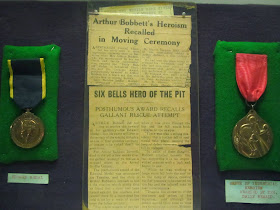Pontypool park covers some 64 hectares and was originally
laid out around 1703 as a private estate, belonging to the Hanbury's.
An old ‘map’ informs us that avenues of sweet chestnut and beech
follow the contours of the valleys up towards the Folly Tower.
Many of the veteran sweet chestnuts are still visible,
surrounding the Nant-y-Gollen ponds and close to the Gorsedd Stone Circle and
are reputedly the largest specimens this far north. They were originally
planted to produce charcoal for the iron forges along the Afon Lwyd river.
During the next 100 years, new plantings of chestnuts, oak,
beech and yew were introduced obscuring the formal avenues and creating the
wooded areas along the river and main path to Pontymoile. (Site of those wonderful gates.)
Conifer plantations were introduced during the 1950-60’s and
left unmanaged and this combined with the growth of many of the original
plantings, has altered the landscape to a predominantly mature wooded park with
some open meadowland.
In the middle of the 20th century the Park passed
into public ownership for the benefit of the community of Pontypool.
The Park contains a number of historic areas including the
Italian Gardens, Tramway Tunnel, Ice Houses and Shell Grotto. The Shell Grotto
was built around 1829 by Molly Mackworth as a summerhouse, some 200m above the
surrounding area and enjoys stunning views across open countryside and the
Severn Estuary.
The Grotto and close-by Folly Tower are both open to the public on special days through the year.
The Grotto and close-by Folly Tower are both open to the public on special days through the year.










































